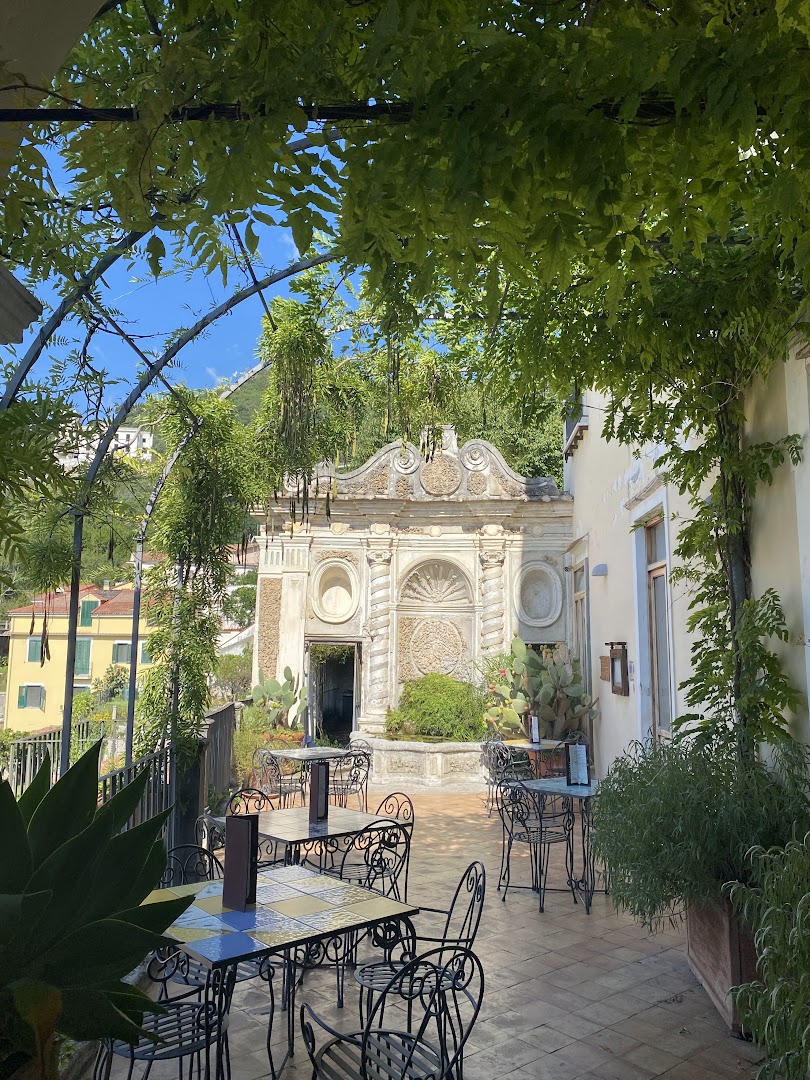If you are visiting the Amalfi Coast or Salerno, you must definitely visit the Minerva Garden.One of the most hidden corners of the city of Salerno, the Minerva Garden is a magical place that contains an important part of Salerno’s history. Located in the heart of the medieval city, it is a terraced botanical garden from which you can observe a panoramic view of Salerno in complete tranquility. Especially on the busiest days when the streets are chaotic, a stop at the Minerva Garden helps you find calm and regenerate. Read on to find out more about this place that must be included among the things to see in Salerno.
Read also: What to see and do in SALERNO in ONE DAY
- A bit of history of the Minerva Garden
- What to do at the Minerva Garden?
- How to reach the Minerva Garden?
A bit of history of the Minerva Garden
The Minerva Garden was built, around the thirteenth century, by the Silvatico family, and in particular Matteo Silvatico, to cultivate some of the plants from which the active principles used for therapeutic purposes were obtained, and also as an educational garden of the Salerno Medical School: here, in fact, students were taught to recognize the parts of the plants (the “simple”) that were used for the production of medicines. The Salerno Medical School, in fact, can be considered the first university of medicine in Europe, while the garden is the oldest botanical garden linked to a medical school.
If you are wondering why it is called the Minerva Garden, the explanation is that Minerva in addition to being the goddess of war, was also the goddess of wisdom, intellectual activities and governed the sciences including medicine, and being this the garden of the Salerno medical school, there may be a mythological reference.
To date, the Minerva Garden has about 350 plant species, some of which are also rare and coming from different parts of the world, brought to the garden initially by Matteo Silvatico on the return of his countless trips. Today the garden is no longer used for medicinal products, but it is possible to find a handmade herbal tea shop with a breathtaking view where you can taste drinks made exclusively using aromatic plants and spices from organic agriculture of the botanical garden. In addition to herbal teas, it is also possible to try and buy the phyto-prepared products of the Simplicia line: a project, born from the desire to recover the ancient therapeutic tradition of the “Simples” of the Salerno Medical School, updating and making available, in the best possible way, the extract of a selection of plant species belonging to this glorious tradition.
What to do at the Minerva Garden?
At the Minerva Garden you can visit the five levels of which it is composed, as well as lingering on the small terrace of the herbal tea shop that is located under the wisteria pergola just at the entrance to the garden. Continuing towards the fountain of water lilies, you reach the first level, where, if you stand in the center, in the circular pitch that is in the center of the flower beds you can read on the ground the four natural elements (water, earth, air and fire) in addition to the four characteristics of the latter (hot, fresh, dry, wet).
What do these writings refer to and what do they mean? They refer to the “theory of the four humours” and the “theory of the elements” on which the theoretical foundations of the care of medicine and the Salerno Medical School were based.
In short, according to the theory of elements, developed in ancient Greece, matter is composed of the harmony between the four natural elements, which are in unstable balance with each other. This same harmony also sustains man, giving him health. When this balance is disturbed, diseases originate. The four natural elements, in fact, were associated with the four characteristics (dry, cold, hot and wet) connected to four “moods”: blood, black bile, yellow bile and phlegm. According to the “theory of moods”, the combination of these four moods determines the “temperament” of the individual, his mental qualities and his state of health. Diseases, caused by the imbalance between moods, were countered using a product of an opposite nature to excess mood. Here is an explanation of the classification of the plants outlined as in the first level of the Minerva Garden, and reported with labels next to each plant present.
How to reach the Minerva Garden?
There are several ways to reach the Minerva Garden. One of these is taking the Fusandola public elevator, in the area where you can also see street art and the walls of the author (I talk about it in this other article). Otherwise, you can walk along the steps of the Fusandola (which I do not recommend to the less trained), starting from the Church of the Santissima Annunziata, or, from the Cathedral of Salerno, following along Via Trotula de Ruggiero, a small uphill road that is located near the Convent of Santa Sofia. Otherwise, if you’re in a car or scooter, you can park along Via Salvatore de Renzi, near the G. Martucci Conservatory of Music, and then get off at Via Porta San Nicola or the San Lorenzo Ramps.
The opening hours of the Minerva Garden are always updated on the website or on the Facebook page. Reservations are not required unless you decide to request a guided tour of the garden. The most recommended time is early in the morning, or towards the closing time that generally corresponds to the sunset hour.
As always, if you need some more advice, or you want to receive the interactive map to get the best orientation and easily reach the Minerva Garden, write to me on Whatsapp or follow me on Instagram and write to me in direct! I’ll wait for you.

